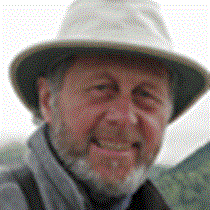Thomas Bay & Petersburg
The fisheries of Alaska are varied and profitable. Solid management practices, instituted many years ago and modified as needs arise, have resulted in what Alaskans pride themselves in claiming “the best managed fisheries in the world.” Undoubtedly, management is essential, but the vast and nutrient-rich waters of the north Pacific are really the key.
Even as we awoke and joined a small group of early risers on the bow, fishermen were at work. Two small salmon trollers worked in close along the steep, glacier-carved shoreline. Big Chinook (king) salmon were their likely target, a species that brings top dollar at the fresh-fish markets of Seattle, Portland and other west coast cities. Some of the catch may even be flown directly to the eastern states. Petersburg, a two-hour run from our morning stop, thrives as a result of fishermen. Accessible only by sea or air, this small, working town boasts a number of efficient canneries and fish processing operations. Itinerant workers flock in from the south, beginning in June, to earn a very good living either as deckhands on the many catch boats or as processors. Their earning power may last well into October, as open seasons are declared on halibut, black cod, crabs, shrimps and exceptional runs of the five species of Pacific salmon. Money changes hands quickly here. The fish boats may sell their catch directly to tenders out on the fishing grounds, who in turn sell it directly to the processing plants, who in turn sell it to the shipping companies and to the world markets. Profits magnify with each sale.
The weather was again perfect today. Kayakers slipped along on calm waters. Hikers avoided overheating only because of a cooling mist that wind-tunneled off a massive, roaring waterfall. The water was likely alpine snow just hours before, its temperature not far removed from that of the snow itself. Enjoying the cool, moist forest were two of Alaska’s very few amphibians…a husky boreal toad and a gentle but very toxic salamander called the rough-skinned newt. To find either one of them is rare; to find both on the same walk is astonishing.
The lifestyle of Alaska’s humpback whales was described in detail for us by a scientist who undoubtedly knows more about this huge mammal that anyone else. Dr. Fred Sharpe has followed this population for 23 years here in Southeast Alaska. His photographic images and descriptions of social behaviours that border on the unbelievable left us wanting more, and realizing just how little we really know about our oceans’ cetacean species. Ninety-five percent of what they do occurs where we cannot see it…well under the water’s surface.
Petersburg welcomed us for the afternoon. Walks or bicycle rides through town, easy hikes into a natural muskeg habitat and a casual stroll along the many docks to talk about man’s harvest of our fisheries resources rounded out another spectacular day. It was topped off by sunset surfacings of ten or more humpback whales, after a veritable feast of sweet and delicious Dungeness crabs fresh from the local fishermen. Petersburg’s economy benefited. So did we.




